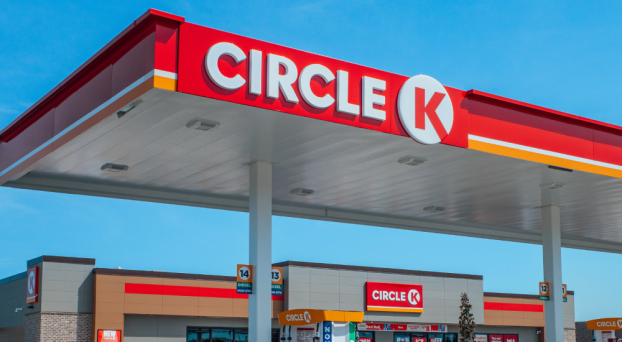At least one route of the electronic superhighway will soon be paved and open for traffic.
In 1995, the ubi interactive tv service, will be introduced in test form in the Saguenay region of Quebec, including the town of Chicoutimi.
ubi stands for universal, bi-directional and interactive.
The system will bring interactive shopping, banking, bill-paying, entertainment, travel reservations and more right into the homes of some 34,000 cable subscribers during the initial test phase.
Beginning in 1996, if the test is a success, the metropolitan regions of Quebec City and Montreal will see the installation of nearly 1.5 million additional terminals.
The ubi concept was developed by Le Groupe Videotron, a Montreal-based cable provider which has more than one million subscribers in Quebec and which already has first-generation interactive cable services in operation in Montreal and Britain.
Videotron is financing ubi in conjunction with its interactive division, Videoway Communications, and five partners: The National Bank of Canada, Hydro-Quebec, Loto-Quebec, Canada Post and The Hearst Corp.
Each of the partners will have limited exclusivity on the system.
However, the system has ultimately been designed to offer open access to any and all comers.
New York-based Hearst has 10% of ubi, about a $25-million investment.
Al Sikes, the division’s president, told Strategy Hearst joined the consortium because ubi represents an opportunity to test leading edge interactivity in a ‘real market’ environment in which all or most of a community is hooked up to the system.
Also, Sikes says ubi was a solid business decision for Hearst because it offers a ‘farsighted framework’ for the interactivity continuum, and it is a good bet to generate revenues to cover at least part of the development costs.
For the time being, Sikes says Hearst will concentrate on its ‘core business’ on ubi.
He says this is an electronic business directory that will let users make restaurant reservations, buy tickets, make packaged good purchases, print discount coupons, and so on.
He says it is the retailers and merchants who advertise in Hearst’s business directory who will pay for ubi, not the users.
Sikes says each time a Hearst advertiser makes a sale to a ubi user he will have to pay a ‘very small’ transaction fee to Hearst and the consortium.
No discussion
As for Hearst’s own media properties – newspapers, magazines and cable tv services such as a&e, Lifetime and espn – Sikes says there has been no discussion yet about involving them with ubi.
Hydro-Quebec has invested in a large piece of ubi – 20%, worth about $50 million – to push its customer service strategy.
Marie Archambault, a spokeswoman for the utility, says Hydro-Quebec is making ‘a big, big effort to be customer-oriented’ and ubi presented a unique opportunity.
Archambault says ubi offers users flexibility in such things as paying their various utility bills and monitoring energy consumption of household appliances.
Save on labor
Also, she says, in future, Hydro-Quebec could save money on labor costs of meter reading if it could be done using ubi.
Hydro-Quebec has three million domestic customers and 70% of the homes in Quebec use electricity for heating. Unlike Ontario, for example, natural gas is not available in all areas of Quebec.
Canada Post has been named ubi’s official electronic carrier.
As such, it will have limited exclusivity in message transmissions between service providers and their customers and it will maintain an address databank on all users.
Canada Post will also have the designation as the ‘official’ provider of parcel delivery services. As such, its name will be at the top of the list each time users are offered a choice of delivery companies to home-deliver their purchases.
Canada Post spokesperson Jean-Maurice Filion says the national mail carrier plans to offer a wide array of pay-per-use services such as targetted, electronic direct mailings by companies and casual electronic letter delivery between users.
As the official financial transaction partner, National Bank of Canada stands to earn on many of the financial transactions performed on ubi.
Ways to pay
There will be three ways to pay for a product or service bought from a ubi supplier: by using a bank account debit card, credit card or the ubi smart card.
ubi’s in-home hardware includes a device that can read the cards and perform the necessary debit.
National Bank will receive a fee each time a user debits his or her bank account, using a bank debit card, or credit card account, using a credit card.
The bank will not receive a fee when a transaction is carried out using a smart card, although it will earn a fee each time it ‘recharges’ a smart card.
National Bank, which has 485 branches in Quebec, plans to introduce a plethora of banking services on ubi.
Still exploring
Charlotte Sauve, National Bank’s director of ubi, says the bank is still exploring how the system will work, but it hopes eventually to be able to use it to sell financial products such as loans, mortgages and rrsps.
Already, it has plans to let its customers do everything from their home they can already do on an automated teller machine, except withdraw cash.
As well, they will be able to carry out housekeeping details such as ordering cheques and making a change of address. DC/PA





















